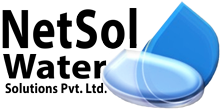What is the Role of AI and IoT in Optimizing Industrial RO Plants?
Water scarcity and climate change necessitate solutions for managing our water supplies. AI and IoT are changing water purification and delivery especially in industrial settings. Industrial RO plants supply clean water for many uses from desalination to wastewater treatment.
We'll discuss how AI and IoT change industrial RO plants. We'll cover RO technology basics uses of AI and IoT and their effects on plant efficiency and cost-effectiveness.
Understanding Reverse Osmosis
Reverse osmosis purifies water using a semi-permeable membrane to eliminate pollutants. Pressure drives water through the membrane which works as a super-fine filter. Clean water goes through while pollutants stay behind.
The RO procedure involves:
1. Pretreatment: Filters remove bigger particles.
2. Pressurization: High pressure forces water against the membrane.
3. Separation: The membrane enables water molecules pass but inhibits impurities.
4. Collection: The system collects purified water (permeate).
5. Discharge: The plant disposes of or handles concentrated waste (brine or refuse).
Industrial RO plants use this technology on a vast scale. They create vast volumes of purified water for:
· Seawater desalination
· Industrial wastewater treatment
· Ultrapure water generation for electronics
· Water purification for food and beverages
RO technology has issues such high energy utilization membrane fouling and scaling and continual monitoring required. AI and IoT handle these issues altering factory operations.
The Rise of AI and IoT in Industrial Applications
AI systems execute tasks that generally need human intelligence like learning problem-solving and pattern recognition. IoT provides a network of interconnected devices that collect and exchange data including sensors actuators and smart equipment.
AI and IoT work together powerfully. IoT devices gather real-time data from numerous system locations. AI analyzes this data to create predictions, find patterns, and offer optimizations. This synergy allows unparalleled automation and efficiency levels.
AI and IoT transform operations by:
1. Predicting when equipment might fail allows preventive maintenance.
2. Suggesting modifications to increase efficiency and product quality.
3. Optimizing energy utilization depending on production needs and energy pricing.
4. Detecting faults or anomalies in real-time.
5. Predicting demand and optimizing inventories.
Now let's explore how these technologies aid industrial RO plants.
AI and IoT in Industrial RO Plants
AI and IoT integration in industrial RO plants revolutionizes water treatment. These solutions overcome various issues experienced by classic RO plants resulting to more efficient sustainable and cost-effective operations.
Real-time Monitoring and Data Collection
IoT sensors throughout the RO plants continuously collect data on water quality pressure flow rates temperature and energy usage. This real-time data provides a full perspective of plant operations allowing instant solutions to difficulties.
Predictive Maintenance
AI algorithms evaluate data from IoT sensors to forecast when membranes might foul. This allows operators to schedule maintenance before problems emerge minimizing downtime and extending membrane life.
Process Optimization
AI analyses large amounts of data to optimise the RO process in real-time. It changes numerous parameters to enhance efficiency and water quality while decreasing energy use.
Energy Efficiency
AI greatly reduces energy use by optimizing pump operations regulating pressure scheduling activities and discovering energy waste.
Water Quality Management
AI and IoT assist maintain high water quality by continuously monitoring parameters forecasting changes in feed water quality identifying anomalies and optimizing post-treatment procedures.
Brine Management
AI and IoT handle brine disposal challenges by maximizing recovery rates evaluating brine composition to discover valuable byproducts and suggesting best disposal or treatment solutions.
Remote Monitoring and Control
IoT provides remote monitoring and control of RO facilities. Operators may monitor performance receive warnings and make adjustments from anywhere.
Data-Driven Decision Making
AI-analyzed data from IoT sensors enables for better informed decision-making. Plant managers can spot patterns enhance resource allocation and make data-driven decisions on system upgrades.
Conclusion
AI and IoT integration in industrial RO plants address long-standing water treatment difficulties enabling more efficient sustainable and cost-effective operations. AI and IoT integration in industrial RO plants address long-standing water treatment difficulties enabling more efficient sustainable and cost-effective operations. AI and IoT alter every element of RO plant operations from predictive maintenance to process optimization. They improve existing processes and create new opportunities in water treatment and resource management.
As water scarcity and environmental issues rise AI and IoT play an increasingly important role in optimizing industrial RO plants. These technologies influence the future of water treatment providing a sustainable water for decades to come.
To explore customised commercial RO plants, Industrial RO plants, ETP or STP solutions for your needs in your areas and nearby regions, contact Netsol Water at:
Phone: +91-9650608473, Email: info@netsolwater.com



